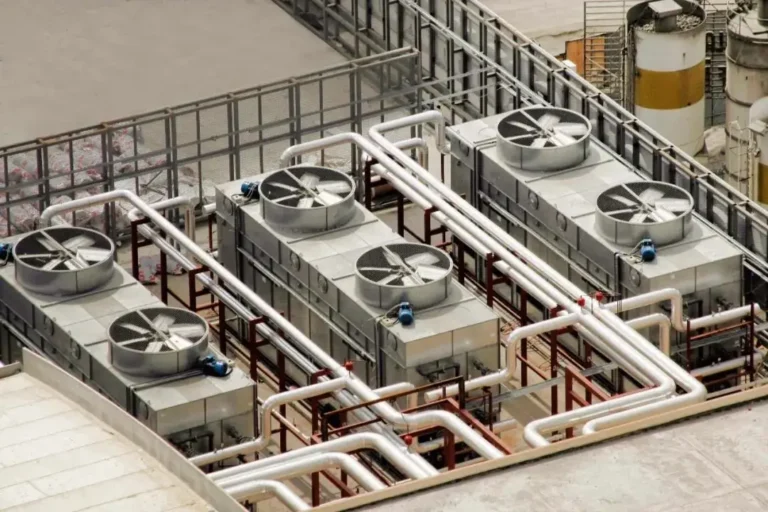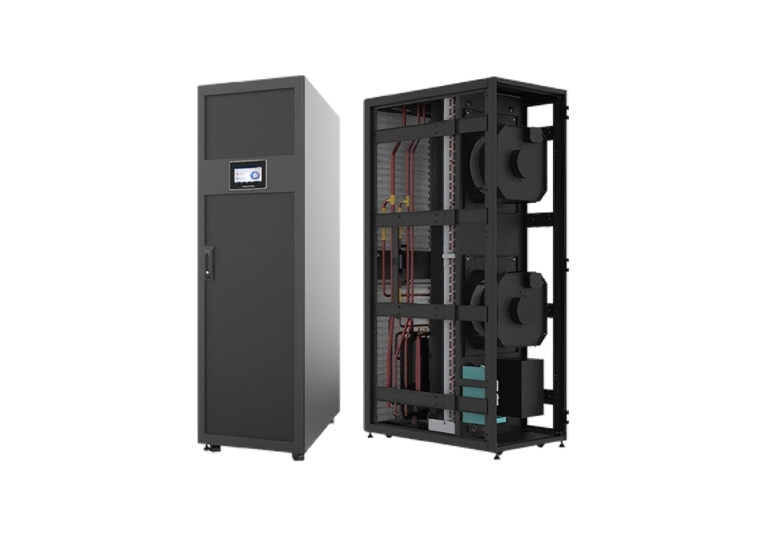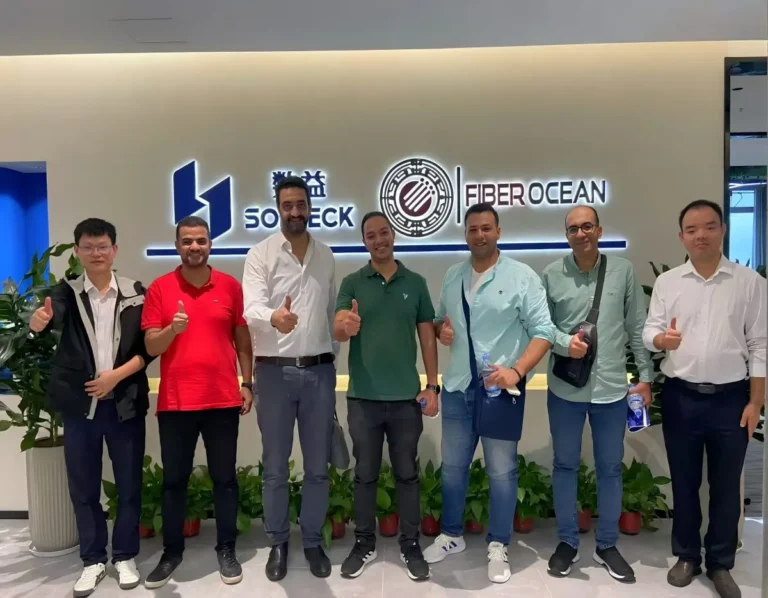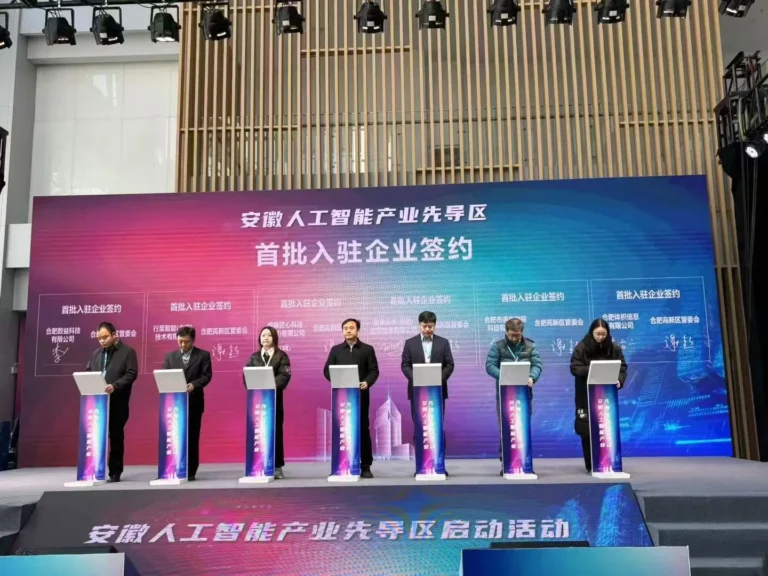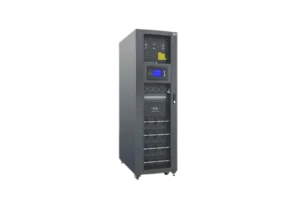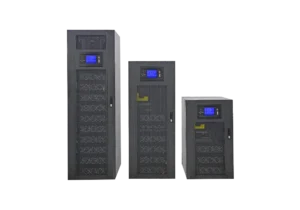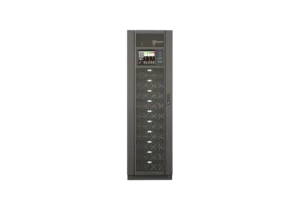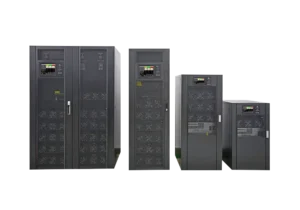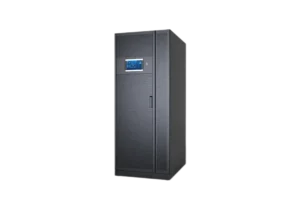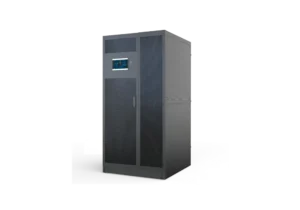When planning the cooling system for a medium-to-large-scale project—whether it’s a 1,000㎡ data center housing hundreds of servers or a multi-floor industrial control room with sensitive equipment—one question often leaves facility managers and engineers stuck: Both water-cooled e chilled-water precision air conditioners rely on water for heat exchange, so how do you choose between them? The confusion usually centers on hidden costs: Will a wrong choice lead to skyrocketing maintenance fees later? Or will the cooling efficiency fall short of the equipment’s strict temperature requirements?
This article cuts through the noise by breaking down the two systems from three key angles: first, explaining their core working principles in simple terms; second, comparing them across 7 critical dimensions (from heat exchange logic to cost structure); and finally, providing scenario-specific recommendations and case examples. By the end, you’ll have a clear roadmap to avoid common pitfalls like “overspending on initial setup” or “underestimating long-term energy bills.”
If you’ve already read our earlier blog on basic suggestions for selecting precision ACs, this piece dives deeper into water-based solutions—turning general knowledge into actionable decisions for your specific project.
How They Work: Focus on Indoor Unit Structure & System Composition
The fundamental difference between water-cooled and chilled-water precision ACs lies in their indoor unit design e heat dissipation pathways. Let’s break down their operational principles and core components.
1. Water-Cooled Precision ACs
Water-cooled precision ACs are categorized as “direct expansion (DX) systems” with integrated water-cooled heat exchange components. Their indoor units contain refrigerant circuits, and heat rejection depends on external water sources (e.g., cooling towers).
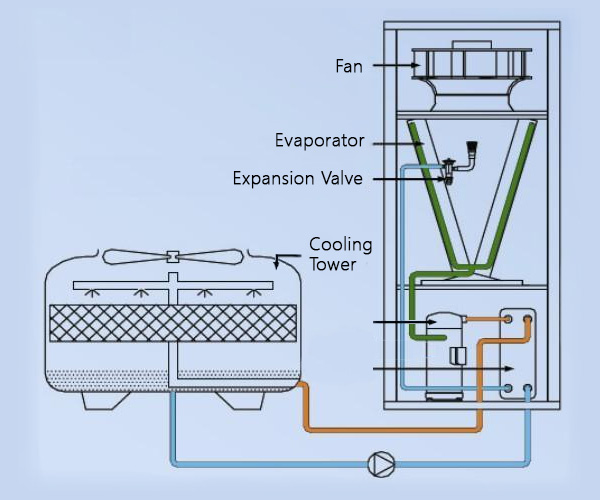
Indoor Unit Core Structure
The indoor unit of a water-cooled precision AC is a self-contained cooling module with two key components:
- Evaporator coil: Directly cools the indoor air. As warm air passes through the coil, the refrigerant inside absorbs heat, turning from liquid to high-temperature, high-pressure gas—this is where the actual cooling of the space occurs.
- Water-cooled heat exchanger: A built-in plate or shell-and-tube heat exchanger (critical distinguishing feature). The hot refrigerant flows through this exchanger, releasing heat to the cooling water circulating within it. This cools the refrigerant back into a liquid, which then re-enters the evaporator to continue the cycle.
Complete System Composition
The system extends beyond the indoor unit to include:
- Cooling water source: Can be a building’s centralized cooling water system, a cooling tower, or a well. In sealed loops with external dry coolers, the cooling water is often a frost-resistant mixture of water and glycol (replacing traditional refrigerants for heat transfer).
- Water pump and piping: Circulates cooling water between the indoor unit’s heat exchanger and the heat rejection device (e.g., cooling tower).
- Heat rejection device: Typically a cooling tower (for wet heat exchange, where air and water directly contact) or a dry cooler (for dry heat exchange, avoiding water evaporation).
Operational Logic
- The indoor evaporator absorbs heat from the room, converting refrigerant to gas.
- The hot refrigerant flows to the built-in water-cooled heat exchanger, transferring heat to the cooling water.
- The heated cooling water is pumped to a cooling tower or dry cooler, releasing heat to the external environment.
- The cooled refrigerant (now liquid) returns to the evaporator, repeating the cycle.
2. Chilled-Water Precision ACs
Chilled-water precision ACs are “terminal cooling devices” that rely entirely on an external chilled water supply. Their indoor units have no refrigerant circuits or compressors, making them simpler in structure but dependent on a centralized cold source.
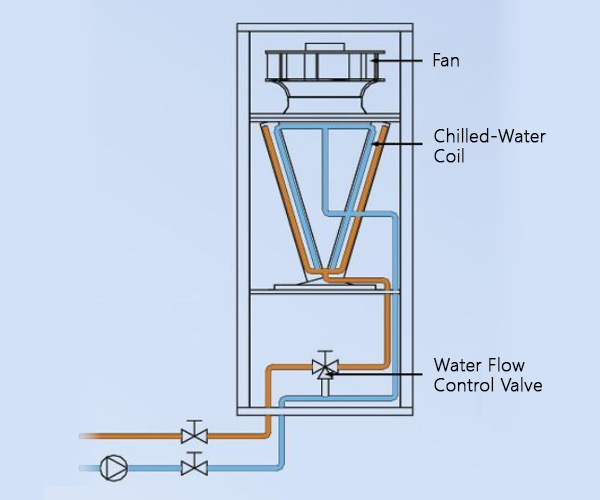
Indoor Unit Core Structure
The indoor unit (terminal unit) of a chilled-water precision AC is designed for indirect heat exchange, with three key components:
- Chilled water coil: A metal coil through which low-temperature chilled water (typically around 15℃ for large data centers) flows. Heat from the indoor air is absorbed by the chilled water as air passes over the coil, cooling the space.
- Fan: Forces indoor air over the chilled water coil, ensuring efficient heat exchange and distributing cooled air throughout the room.
- Water control valve: Regulates chilled water flow based on indoor temperature demands, adjusting cooling capacity dynamically.
Complete System Composition
The chilled-water system is a distributed network requiring multiple coordinated components:
- External chilled water source: A central chiller plant that cools water to the required temperature (e.g., 15℃).
- Chilled water pump and piping network: Delivers chilled water from the chiller to the indoor units and returns warm water for re-cooling.
- Supporting equipment: Includes plate heat exchangers (for heat transfer optimization), cooling towers (to dissipate heat from the chiller), and cooling water pumps (for the chiller’s heat rejection loop).
Operational Logic
- The central chiller produces low-temperature chilled water and distributes it to all indoor units via pipes.
- Indoor air is blown over the chilled water coil, with heat transferred to the chilled water.
- The now-warmed chilled water flows back to the chiller, where it is re-cooled.
- Cooling capacity of the indoor unit varies with factors like inlet/outlet water temperature and air conditions—output can differ by several times under different operating conditions.
Key Differences: Indoor Units & System Characteristics
The table below compares the two systems across critical dimensions, highlighting differences in structure, performance, and applicability:
| Comparison Dimension | Water-Cooled Precision AC | Chilled-Water Precision AC |
|---|---|---|
| 1. Indoor Unit Core Components | Evaporator coil, built-in water-cooled heat exchanger (plate/shell-and-tube), refrigerant circuit | Chilled water coil, fan, water control valve (no refrigerant or compressor) |
| 2. Heat Exchange Path | Room air → Refrigerant (evaporator) → Cooling water (built-in heat exchanger) → External heat rejection | Room air → Chilled water (coil) → Central chiller → External heat rejection |
| 3. Cooling Capacity Stability | Fixed (determined by refrigerant circuit design) | Variable (depends on chilled water temperature, air conditions—can vary several times) |
| 4. System Dependence | Independent operation (only needs cooling water source) | Dependent on central chiller plant (cannot operate alone) |
| 5. Energy Efficiency | Higher than air-cooled systems; heat exchange efficiency stable | Depends on chiller efficiency; overall system efficiency high for large-scale applications |
| 6. Installation Requirements | Needs cooling water piping (connecting indoor unit to heat rejection device) | Needs chilled water piping network (connecting to central chiller) |
| 7. Applicable Scenarios | Locations with centralized cooling water systems; medium cooling loads (single zone) | Large data centers or multi-zone facilities; integrated with central chiller plants |
Which One to Choose? Scenario-Specific Guidance
The “right” system depends on your project’s size, location, budget, and long-term goals. Below are the most common scenarios where one system outperforms the other—plus mistakes to avoid.
1. Choose Water-Cooled If:
- Your project is small and localized: For example, a 50–300㎡ server room or a single-floor industrial control room. The lower initial cost and simple setup mean you can get up and running quickly without overinvesting.
- Indoor and outdoor units are close (≤30m): If your cooling tower can be placed near the indoor unit (e.g., on a nearby rooftop or adjacent lot), you’ll avoid efficiency losses from long refrigerant lines.
- You have a tight upfront budget (and lower sensitivity to maintenance costs): For short-term projects (like a temporary testing lab) or teams with in-house maintenance staff, the higher ongoing costs are easier to manage than a chiller’s steep initial price.
2. Choose Chilled-Water If:
- Your project is large or spread out: For a 1,000㎡+ data center, a hospital with multiple labs, or a cross-floor manufacturing facility, the chiller’s pipe network can cool all areas from one central unit—eliminating the need for multiple independent systems.
- Energy efficiency and long-term savings matter: If your system runs 24/7 (like a cloud data center), the chiller’s high EER and free cooling integration will pay off. Most clients recoup the higher initial cost within 3–5 years via lower energy and maintenance bills.
- You lack outdoor space (or need long-distance cooling): In dense urban areas where a cooling tower isn’t feasible (e.g., a downtown office building’s basement server room), chilled water pipes can run hundreds of meters without losing efficiency.
3. Common Mistakes to Avoid
- Mistake 1: “Big project = must use chilled water”: If your large project is split into independent, disconnected areas (e.g., three separate 400㎡ server rooms in different buildings), multiple water-cooled systems might be cheaper than a single chiller with long, costly pipes.
- Mistake 2: “Water-cooled is easier to maintain”: Don’t overlook humidity risks. In coastal or high-humidity areas, cooling towers breed algae and scale quickly—clogging condensers and causing unexpected downtime. Chilled water’s stable chemistry avoids this.
- Mistake 3: “Chilled water is too expensive upfront”: Always calculate long-term ROI. A chiller might cost 50% more initially, but if it cuts your annual energy bill by $12,000 (as in the case study below), it will save you money over time.
Case Examples: Selection Logic for Your Reference
To make the selection logic more tangible, here are two illustrative case examples that align with common project scenarios. They reflect typical decision-making factors (budget, space, scale) to help you map them to your own needs.
1. Water-Cooled System for a 300㎡ Factory Control Room
- Project Background: A manufacturing plant plans to cool a 300㎡ control room that houses equipment for monitoring assembly lines. The room is adjacent to an empty outdoor area, and the project has an upfront budget of $50,000.
- Why Water-Cooled?: A chilled-water system would cost over $75,000 (including the chiller and piping), exceeding the budget. The outdoor space can accommodate a small cooling tower, and the distance between the indoor and outdoor units is only 15m—ideal for a water-cooled setup. Additionally, the plant has an in-house maintenance team capable of handling regular tower cleanings.
- Expected Outcome: The system maintains the room temperature at 22±1℃ (meeting equipment requirements) with an estimated annual energy cost of ~$8,000. Monthly maintenance takes 2–3 hours, which can be managed by the plant’s internal team.
2. Chilled-Water System for a 1,500㎡ Urban Data Center
- Project Background: A tech company intends to build a 1,500㎡ data center across three floors of a downtown office building. The building has no outdoor space for cooling towers, and the system needs to operate 24/7.
- Why Chilled-Water?: A water-cooled system is unfeasible due to the lack of tower space, and multiple small cooling units would be inefficient. The chiller is installed in the building’s basement, with pipes connecting to cooling coils on each floor. Free cooling is integrated to reduce winter energy consumption.
- Expected Outcome: The data center’s PUE (Power Usage Effectiveness) is projected to drop to 1.2 (well below the industry average of 1.5), with an annual energy cost of $36,000—$12,000 less than a water-cooled alternative. The higher initial cost of the chiller is expected to be recouped within 4 years.
Conclusion & Next Steps
1. Key Takeaway
To sum it up in one sentence: Water-cooled systems are for “small, close, and budget-tight” projects; chilled-water systems are for “large, spread-out, and efficiency-focused” ones. The core difference lies in their heat exchange logic—direct vs. indirect—which ripples through every aspect of cost, installation, and performance.
For a quick check, use this simplified decision flow:
- Is your project ≤500㎡ (small) or ≥1000㎡ (large)?
- Are indoor-outdoor units ≤30m apart (water-cooled) or need to be farther (chilled-water)?
- Do you prioritize upfront savings (water-cooled) or long-term efficiency (chilled-water)?
2. Next Steps
- If you’re still unsure: Gather these details and reach out to a technical team: project size (㎡), number of areas to cool, indoor-outdoor distance, budget (upfront vs. long-term), and outdoor space availability. This will let experts tailor a solution to your needs.
- Learn more: For tips on keeping your system running smoothly, read our blog “Precision AC Maintenance Tips: Extending Lifespan and Cutting Costs.” To gain deeper insights into choosing the right precision AC for critical environments (including free cooling considerations), check out our guide on Aspectos-chave para a seleção de CA de precisão em ambientes críticos.
- Get support: At SOETECK, we design, install, and maintain both systems for 300+ medium-to-large projects (from data centers to hospitals). Our team can help you compare costs, assess your space, and build a solution that fits your goals—no overengineering, no hidden fees.
Whether you choose water-cooled or chilled-water precision cooling system, the goal is the same: reliable, efficient cooling that keeps your equipment running—and your costs in check. With the right system, you’ll avoid the headaches of downtime, overspending, and missed efficiency targets.

